Transformations for FIR and IIR Filters’ Design
Abstract
1. Introduction
2. Finite Impulse Response Filters and Infinite Impulse Response Filters
2.1. FIR Filters
2.2. IIR Filters
3. Transfer Functions for 2-D Digital Filters
3.1. Direct Design of 2-D Filters from Appropriate 1-D Functions
3.2. Design of 2-D Filters Using Optimization Techniques
4. Conclusions
Author Contributions
Funding
Conflicts of Interest
References
- Orfanidis, S. Introduction to Signal Processing; Prentice Hall: Upper Saddle River, NJ, USA, 1996. [Google Scholar]
- Lu, W.; Antoniou, A. Two-Dimensional Digital Filters; CRC Press: Boca Raton, FL, USA, 1992. [Google Scholar]
- Hsieh, C.-H.; Kuo, C.-M.; Jou, Y.-D.; Han, Y.-L. Design of two-dimensional FIR Digital Filters by a two-dimensional WLS Technique. IEEE Trans. Circuits Syst. Part II 1997, 44, 348–412. [Google Scholar] [CrossRef]
- Reay, D.S. Digital Signal Processing Using the ARM® CORTEX®-M4; John Wiley & Sons: Hoboken, NJ, USA, 2015. [Google Scholar]
- Mastorakis, N.E. Transformations for direct design of 2-D filters from appropriate 1-D functions. WSEAS Trans. Circuits Syst. 2011, 10, 10–16. [Google Scholar]
- Mastorakis, N.E.; Gonos, I.F.; Swamy, M.N.S. Design of Two-Dimensional Recursive Filters Using Genetic Algorithms. IEEE Trans. Circuits Syst. I Regul. Pap. 2003, 50, 634–639. [Google Scholar] [CrossRef]
- Mladenov, V.; Mastorakis, N. Design of two-dimensional recursive filters by using neural networks. IEEE Trans. Neural Netw. 2001, 12, 585–590. [Google Scholar] [CrossRef] [PubMed]
- Goldberg, D.E. Genetic Algorithms in Search, Optimization and Machine Learning; Addison-Wesley: Reading, MA, USA, 1989. [Google Scholar]
- Tsoulos, I.G.; Stavrou, V.N.; Mastorakis, N.; Tsalikakis, D. GenConstraint: A programming tool for constraint optimization problems. SoftwareX 2019, 10, 100355. [Google Scholar] [CrossRef]
- Tsoulos, I.G. Solving constrained optimization problems using a novel genetic algorithm. Appl. Math. Comput. 2009, 208, 273–283. [Google Scholar] [CrossRef]
- Dhadal, S.; Venkateswaran, P. Two-Dimensional IIR Filter Design Using Simulated Annealing Based Particle Swarm Optimization. J. Optim. 2014, 2014, 1–10. [Google Scholar]
- Kaveh, A.; Talatahari, S. An improved ant colony optimization for constrained engineering design Problems. Eng. Comput. 2010, 27, 155–182. [Google Scholar] [CrossRef]
- Lillo, W.E.; Hui, S.; Zak, S.H. Neural networks for constrained optimization problems. Int. J. Circuit Theory Appl. 1993, 21, 385–399. [Google Scholar] [CrossRef]
- Perez, R.E.; Jansen, P.W.; Martins, J.R.R.A. pyOpt: A Python-Based Object-Oriented Framework for Nonlinear Constrained Optimization. Struct. Multidiscip. Optim. 2012, 45, 101–118. [Google Scholar] [CrossRef]
- Mirjalili, S.; Mirjalili, S.M.; Lewis, A. Grey wolf optimizer. Adv. Eng. Softw. 2014, 69, 46–61. [Google Scholar] [CrossRef]
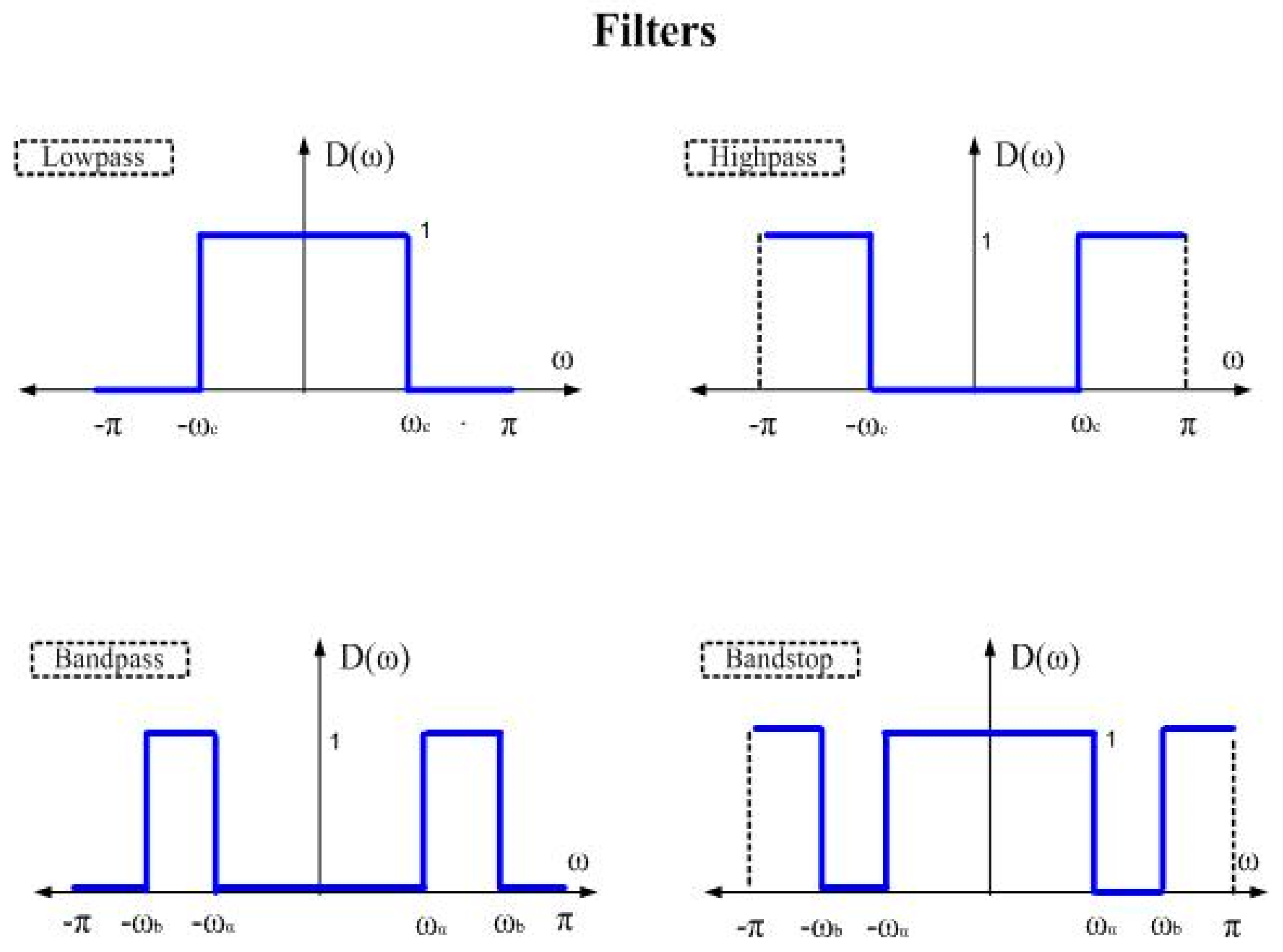

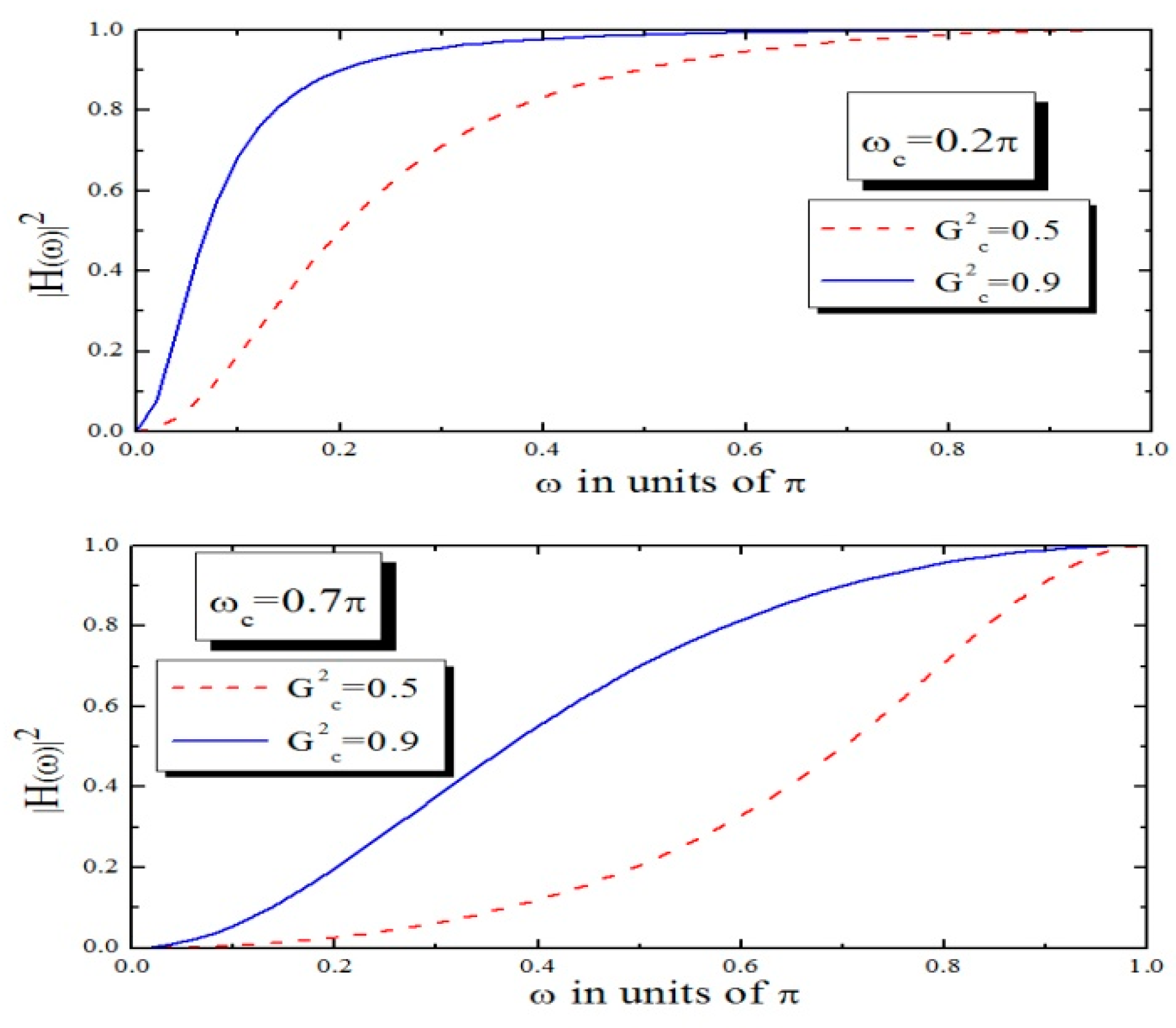
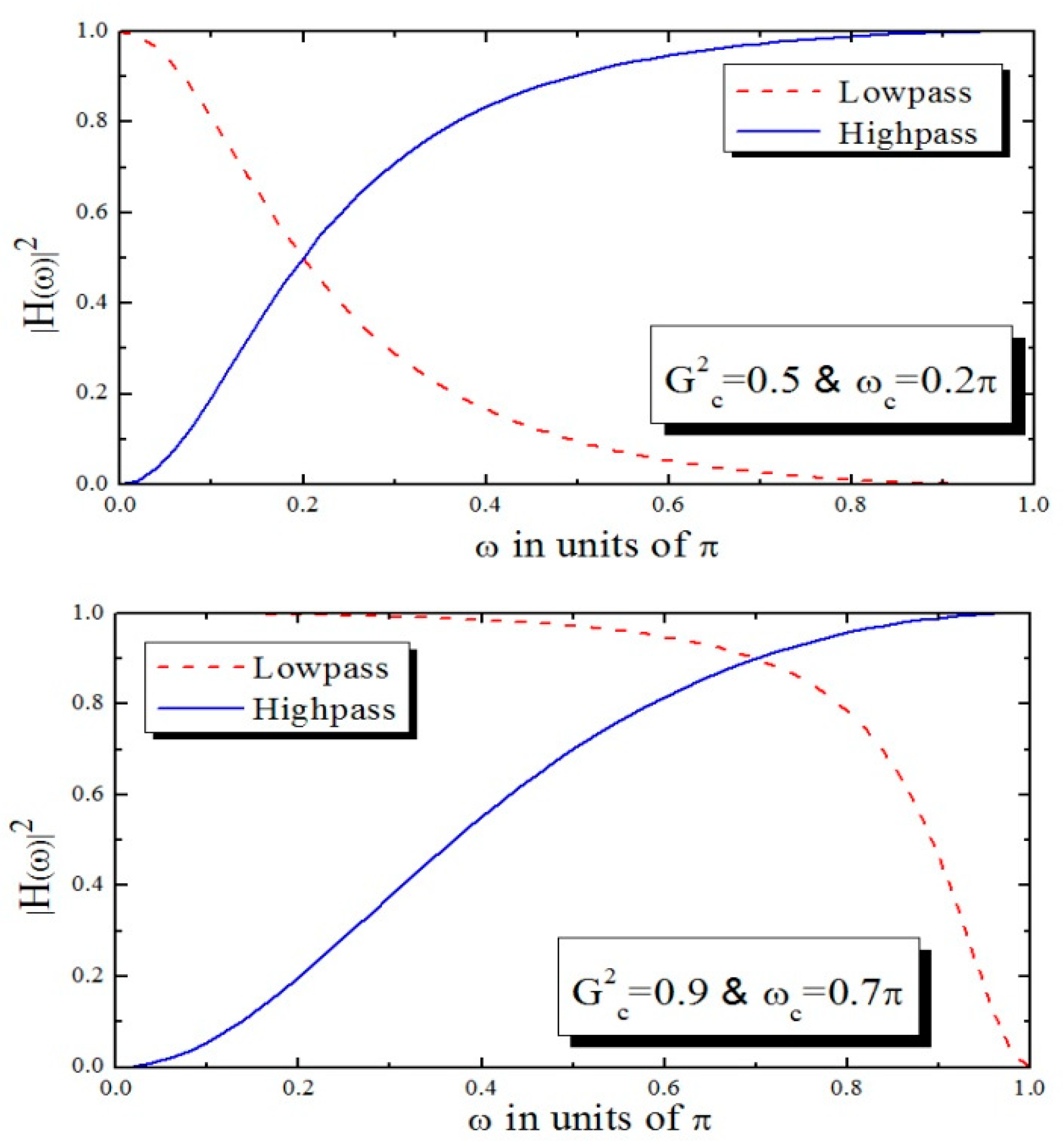
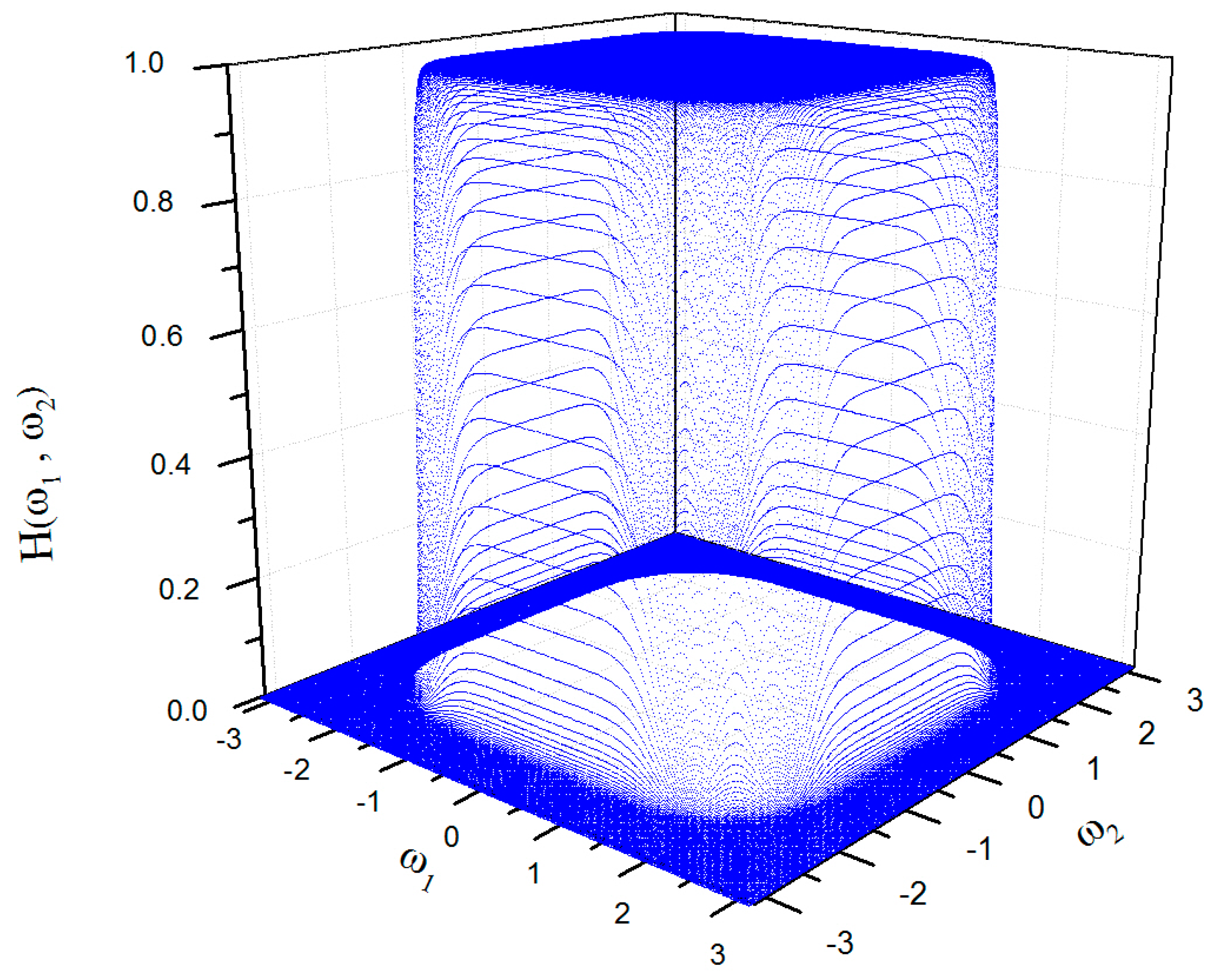
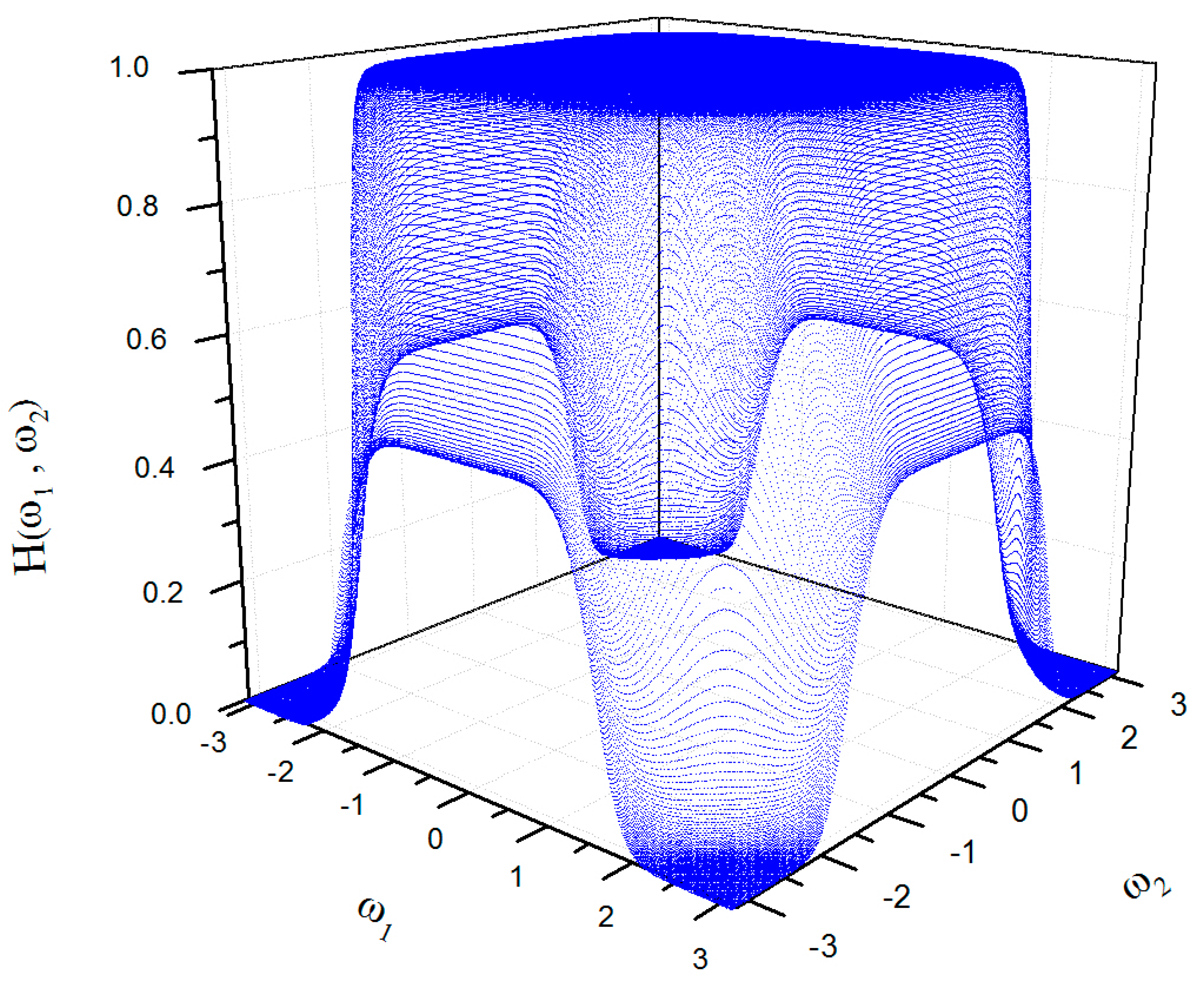
Publisher’s Note: MDPI stays neutral with regard to jurisdictional claims in published maps and institutional affiliations. |
© 2021 by the authors. Licensee MDPI, Basel, Switzerland. This article is an open access article distributed under the terms and conditions of the Creative Commons Attribution (CC BY) license (http://creativecommons.org/licenses/by/4.0/).
Share and Cite
Stavrou, V.N.; Tsoulos, I.G.; Mastorakis, N.E. Transformations for FIR and IIR Filters’ Design. Symmetry 2021, 13, 533. https://doi.org/10.3390/sym13040533
Stavrou VN, Tsoulos IG, Mastorakis NE. Transformations for FIR and IIR Filters’ Design. Symmetry. 2021; 13(4):533. https://doi.org/10.3390/sym13040533
Chicago/Turabian StyleStavrou, V. N., I. G. Tsoulos, and Nikos E. Mastorakis. 2021. "Transformations for FIR and IIR Filters’ Design" Symmetry 13, no. 4: 533. https://doi.org/10.3390/sym13040533
APA StyleStavrou, V. N., Tsoulos, I. G., & Mastorakis, N. E. (2021). Transformations for FIR and IIR Filters’ Design. Symmetry, 13(4), 533. https://doi.org/10.3390/sym13040533






